Ditapis dengan

Interorganizational Collaborative Forecasting and Replenishment Systems and S…
Collaborative Forecasting and Replenishment (CFAR) is a new interorganizational system that enables retailers and manufacturers to forecast demand and schedule production jointly. The capabilities of CFAR exceed those of the traditional ED1 because CFAR allows exchange of complex decision support models and manufacturerhetailer strategies. The proponents of CFAR claim that the fastest way for r…
- Edisi
- Volume 30 Number 4 Fall 1999
- ISBN/ISSN
- -
- Deskripsi Fisik
- 19 p.
- Judul Seri
- Forecasting and Replenishment System
- No. Panggil
- ATC LO SRI i

Efficiency assessment of container operations of shipping agents in Spanish p…
In this paper a two-stage Data Envelopment Approach is used to assess the relative efficiency of container shipping agents operating at Spanish ports, and studying the factors influencing it. In the first stage, an input-oriented, Variable Returns to Scale (VRS) model is used to compute efficiency scores of the different shipping agents. The model considers labor as input, and numbers of loaded…
- Edisi
- 2015
- ISBN/ISSN
- -
- Deskripsi Fisik
- 19 p.
- Judul Seri
- Maritime Policy & Management: The flagship journal of international shipping and port research
- No. Panggil
- ATC LO GUT e

Design and development of an intelligent context-aware decision support syste…
This paper describes a case study of the research and development of an intelligent context-aware decision support system (ICADSS) prototype for real-time monitoring of container terminal operations in Hong Kong. We present the system design and development of the prototype system, and discuss the experiences and lessons learned. To the best of our knowledge, this study is the first identifiab…
- Edisi
- Vol. 49, No. 12, 15 June 2011, 3501–3526
- ISBN/ISSN
- 1366–588X
- Deskripsi Fisik
- 28 p.
- Judul Seri
- International Journal of Production Research
- No. Panggil
- ATC LO NGA d

Assessing a cross-border logistics policy using a performance measurement sys…
For the most rapidly growing economic entity in the world, China, a new logistics operation called the indirect cross-border supply chain model has recently emerged. The primary idea of this model is to reduce logistics costs by storing goods at a bonded warehouse with low storage cost in certain Chinese regions, such as the Pearl River Delta (PRD). This research proposes a performance measurem…
- Edisi
- Vol. 45, No. 6, 1306–1320
- ISBN/ISSN
- -
- Deskripsi Fisik
- 16 p.
- Judul Seri
- International Journal of Systems Science
- No. Panggil
- ATC LO WON a

An RFRS that combines RFID and CBR technologies
The purpose of this paper is to propose a real-time food receiving operations management system (RFRS), focusing on demonstrating the use of a case-based reasoning (CBR) and radio frequency identification (RFID) technology in managing the complex food receiving activities in distribution centers, to deal with the global concerns in food safety management
- Edisi
- Vol. 112 No. 3, 2012 pp. 385-404
- ISBN/ISSN
- 0263-5577
- Deskripsi Fisik
- 22 p.
- Judul Seri
- Industrial Management & Data Systems
- No. Panggil
- ATC LO CHO a

An analysis of ship escort and convoy operations in ice conditions
Winter navigation is a complex but common operation in the Northern Baltic Sea areas. In Finnish waters, the safety of the wintertime maritime transportation system is managed through the Finnish–Swedish winter navigation system. This system results in different operational modes of ship navigation, with vessels either navigating independently or under icebreaker assistance. A recent risk ana…
- Edisi
- 2016
- ISBN/ISSN
- 0925-7535
- Deskripsi Fisik
- 12p
- Judul Seri
- Safety Science
- No. Panggil
- ATC LO GOE a

An Activity-Based Costing Model for Logistics Operations of Manufacturers and…
The logistics costs of industrial enterprises in a supply chain are studied. The following aspects of logistics costs are included: an ABC (Activity-Based Costing) calculation model for logistics; average logistics costs of Finnish industrial manufacturers and suppliers; the factors which in¯ uence a company’s cost ef® ciency in logistics; and an ABC simulation model for the logistics costs…
- Edisi
- Vol. 3, No. 1, 2000
- ISBN/ISSN
- 1469-848X
- Deskripsi Fisik
- 15p
- Judul Seri
- International Journal of Logistics Research and Applications: A Leading Journal of Supply Chain Management
- No. Panggil
- ATC LO MAN a

Preliminary study on new container stacking/storage system due to space limit…
The purpose of this study is to introduce a new innovative means of container stacking/ storage as a potential solution for overcoming the lack of container yard space.
- Edisi
- Vol. 1 No. 1, 2016 pp. 21-39
- ISBN/ISSN
- 2397-3757
- Deskripsi Fisik
- 20P
- Judul Seri
- Maritime Business Review
- No. Panggil
- ATC PO RAH p

Evaluation of alternative logistics operations for the national supply of an …
One result of the continuing current competitive environment in Australia is cost pressure on the supply of manufacturing commodities such as anhydrous sodium sulphate. Commodity suppliers do not have much scope for providing value-added services. Anhydrous sodium sulphate, for example, is mostly brought to the customer’s attention when negative service characteristics occur – stocks run lo…
- Edisi
- Vol. 28 No. 5, 1998, pp. 382-395
- ISBN/ISSN
- 0960-0035
- Deskripsi Fisik
- 15 p
- Judul Seri
- International Journal of Physical Distribution & Logistics Management
- No. Panggil
- ATC LO GIL e

Cargo Work For Maritime Operations
The world of cargo operations has changed considerably from the days of the open stowage of merchandise. Unitized cargoes in the form of ‘containers’ or Roll-on, Roll-off cargoes and pallatization have generated a need for alternative handling methods and changing procedures. The work of the stevedore/longshoreman has moved on to a vastly different role to that previously employed in gener…
- Edisi
- 1960
- ISBN/ISSN
- 0 7506 6555 6
- Deskripsi Fisik
- Cargo Work
- Judul Seri
- 344
- No. Panggil
- TXT PO HOU c

Assessing the Environmental Impact of Maritime Operations in Ports: A Systems…
This chapter presents a framework which is accessible to port authorities to assess the potential environmental impact of maritime operations. Pursuant on globalisation, increased numbers of shipmovements have generatedmore frequent routine maritime operations in ports but few formal approaches exist for assessing their environmental impact, which potentially could be significant. In a novel f…
- Edisi
- 2012
- ISBN/ISSN
- 978-1-78052-340-8
- Deskripsi Fisik
- 25P
- Judul Seri
- Maritime Logistics
- No. Panggil
- ATC LO DIN a

PORT OPERATIONS, PLANNING AND LOGISTICS
Ports are critical infrastructure resources and serve a key role in the transportation of freight and people. With more than 80% of international trade by volume being carried by sea, ports are vital for seaborne trade and international commerce. Ports are the critical nodal interfaces where maritime transport connects with other modes of tra sport and where trading, distribution and logistics…
- Edisi
- 2009
- ISBN/ISSN
- 13: 978-1-843-11805-
- Deskripsi Fisik
- 383p
- Judul Seri
- LLOYD’S PRACTICAL SHIPPING GUIDES
- No. Panggil
- TXT MG BIC p

A characterization of a business process
Hess and Oesterle (1996) provide a detailed comparison of 12 approaches to business process reengineering (BPR). Common themes to each method are the gathering of information, some characterization of the business process that is being reengineered followed by analysis and process modification. However, techniques for characterizing business processes are not yet well established. This paper ta…
- Edisi
- Vol. 18 No. 9/10, 1998, pp. 924-936,
- ISBN/ISSN
- -
- Deskripsi Fisik
- 15p
- Judul Seri
- International Journal of Operations & Production Management
- No. Panggil
- ATC MG MCK a

Application of El Farol model for managing marine terminal gate congestio
Truck queuing at marine terminal gates has long been recognized as a source of emissions problem due to the large number of trucks idling. For this reason, there is a great deal of interest among the different stakeholders to lessen the severity of the problem. An approach being experimented by some terminals to reduce truck queuing at the terminal is to provide live views of their gates via we…
- Edisi
- -
- ISBN/ISSN
- 0739-8859
- Deskripsi Fisik
- 9 p.
- Judul Seri
- Research in Transportation Economics
- No. Panggil
- ATC PO RIF a

Halal logistics: the role of ports, issues and challenges
- Edisi
- Vol. 5 Iss 3
- ISBN/ISSN
- -
- Deskripsi Fisik
- 15 p.
- Judul Seri
- Advances in Islamic Finance, Marketing, and Management
- No. Panggil
- ATC MG AZI h
- Edisi
- Vol. 5 Iss 3
- ISBN/ISSN
- -
- Deskripsi Fisik
- 15 p.
- Judul Seri
- Advances in Islamic Finance, Marketing, and Management
- No. Panggil
- ATC MG AZI h

Electronic data interchange (EDI) in port operations
- Edisi
- Vol. 8 No. 2, 1995
- ISBN/ISSN
- 0957-6053
- Deskripsi Fisik
- 6 p .
- Judul Seri
- Logistics Information Management
- No. Panggil
- ATC MG GAR e
- Edisi
- Vol. 8 No. 2, 1995
- ISBN/ISSN
- 0957-6053
- Deskripsi Fisik
- 6 p .
- Judul Seri
- Logistics Information Management
- No. Panggil
- ATC MG GAR e
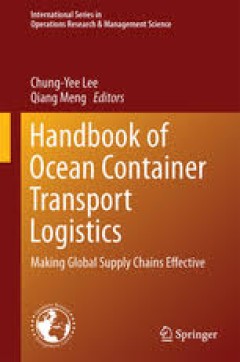
Handbook of ocean container transport logistics: making global supply chains …
- Edisi
- -
- ISBN/ISSN
- 2214-7934
- Deskripsi Fisik
- xvii, 552 p.
- Judul Seri
- -
- No. Panggil
- TXT LO LEE h
- Edisi
- -
- ISBN/ISSN
- 2214-7934
- Deskripsi Fisik
- xvii, 552 p.
- Judul Seri
- -
- No. Panggil
- TXT LO LEE h

Enterprise risk management in international construction operations
- Edisi
- -
- ISBN/ISSN
- 978-981-287-549-5
- Deskripsi Fisik
- -
- Judul Seri
- -
- No. Panggil
- TXT MG Zha e
- Edisi
- -
- ISBN/ISSN
- 978-981-287-549-5
- Deskripsi Fisik
- -
- Judul Seri
- -
- No. Panggil
- TXT MG Zha e
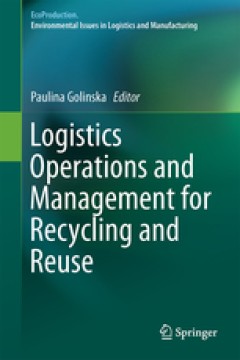
Logistics operations, supply chain management and sustainability
- Edisi
- -
- ISBN/ISSN
- 978-3-319-07287-6
- Deskripsi Fisik
- -
- Judul Seri
- -
- No. Panggil
- TXT LO Gol l
- Edisi
- -
- ISBN/ISSN
- 978-3-319-07287-6
- Deskripsi Fisik
- -
- Judul Seri
- -
- No. Panggil
- TXT LO Gol l
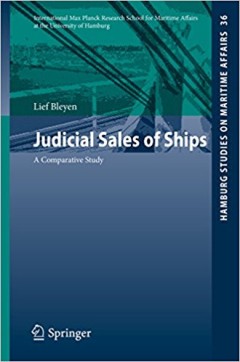
Judicial sales of ships : a comparative study
- Edisi
- -
- ISBN/ISSN
- 978-3-319-24376-4
- Deskripsi Fisik
- vix, 203 p.
- Judul Seri
- -
- No. Panggil
- TXT LO BLE j
- Edisi
- -
- ISBN/ISSN
- 978-3-319-24376-4
- Deskripsi Fisik
- vix, 203 p.
- Judul Seri
- -
- No. Panggil
- TXT LO BLE j

Supply chain risks: a review and typology
Supply chain security (SCS), as a component of an organization’s overall supply chain risk management strategy, has become a critical factor for businesses and government agencies since September 11, 2001, yet little empirical research supports policy or practice for the field. Therefore, this paper develops and presents a categorization of SCS based on existing research. This categorization …
- Edisi
- Vol. 20 No. 1, 2009
- ISBN/ISSN
- -
- Deskripsi Fisik
- 34 p.
- Judul Seri
- The International Journal of Logistics Management
- No. Panggil
- ATC LO GOL s

Supply governance structures for reverse logistics systems
The purpose of this paper is to examine the changes in governance structures that evolved as reverse logistics systems were developed. The UK car crash repair sector was used as a case study.
- Edisi
- Vol. 33 No. 6, 2013
- ISBN/ISSN
- -
- Deskripsi Fisik
- 22 p.
- Judul Seri
- International Journal of Operations & Production Management
- No. Panggil
- ATC LO HAR s

An optimization approach to risk decision-making of closed-loop logistics bas…
In green logistics operation, all logistics processes form a bidirectional closed-loop topology. In order to model and optimize such a kind of structure, a standardized closed-loop logistics operation reference model is built which aims to provide supply chain managers with general analysis. Based on the reference model, potential risks of closed-loop logistics chain can be analyzed including n…
- Edisi
- Vol. 61, No. 10, October 2012
- ISBN/ISSN
- -
- Deskripsi Fisik
- 32 p.
- Judul Seri
- Optimization: A Journal of Mathematical Programming and Operations Research
- No. Panggil
- ATC LO ZHA a

An efficiency analysis of cargo-handling operations at container terminals
In this paper, a Data Envelopment Analysis approach is used to assess the efficiency of cargo-handling operations at a container terminal and study the factors influencing it. The aim is to provide recommendations that would allow a container terminal to reach high technical efficiency scores, in order to increase its inner productivity. A three-stage methodological framework is proposed to ana…
- Edisi
- -
- ISBN/ISSN
- -
- Deskripsi Fisik
- 21 p.
- Judul Seri
- -
- No. Panggil
- ATC LO LUN a

Modelling interrelationships between logistics and transportation operations …
This paper aims to present a system dynamics model for the interdependencies between logistics strategies and freight transport. As efficient freight transport operations are a crucial part withinsecuringthecompetitivenessofacompany,the“right”logisticsstrategyplaysakeyrolewithin realizationofefficienttransportationmovementsloweringenvironmentalimpacts.
- Edisi
- Vol. 38 No. 5, 2015
- ISBN/ISSN
- -
- Deskripsi Fisik
- 37 p.
- Judul Seri
- Management Research Review
- No. Panggil
- ATC LO OPH m

A non-linear traffic flow-based queuing model to estimate container terminal …
Efficient handling of containers at a terminal can reduce the overall vessel sojourn times and minimise operational costs. The internal transport of containers in these terminals is performed by vehicles that share a common guide path. The throughput capacity of a terminal may increase by increasing the number of vehicles; however, simultaneously congestion may reduce the effective vehicle spee…
- Edisi
- -
- ISBN/ISSN
- -
- Deskripsi Fisik
- 23 p.
- Judul Seri
- for updates International Journal of Production Research
- No. Panggil
- ATC LO KOS a

A conceptual model for evaluating the financial impact of supply chain manage…
The purpose of this paper is to review the literature concerning supply chain management technology (SCMT) and financial performance, and to present a model for evaluating the financialperformance benefits of investments in supply chain management technologies. The literature review and the associated model also lead to a discussion of opportunities for future research in the area
- Edisi
- Alan Blankley
- ISBN/ISSN
- -
- Deskripsi Fisik
- 30 p.
- Judul Seri
- The International Journal of Logistics Management
- No. Panggil
- ATC LO BLA a

Building operations management theory through case and field research
Case and field research studies continue to be rarely published in operations management journals, in spite of increased interest in reporting such types of studies and results. This paper documents the advantages and rigor of caserfield research and argues that these methods are preferred to the more traditional rationalist methods of optimization, simulation, and statistical modeling for buil…
- Edisi
- -
- ISBN/ISSN
- -
- Deskripsi Fisik
- 15 p.
- Judul Seri
- -
- No. Panggil
- ATC MG MER b

MicroPort: a general simulation platform for seaport container terminals
Seaport container terminals are essential nodes in sea cargo transportation networks. As such, the operational efficiency of container terminals in handling containers passing through them plays a critical role in a globalized world economy. Many models and algorithms have been developed to address various decision problems in container terminals to help improve operational efficiency. These de…
- Edisi
- -
- ISBN/ISSN
- -
- Deskripsi Fisik
- 11 p.
- Judul Seri
- -
- No. Panggil
- ATC PO PEN m
Perencanaan pelabuhan
- Edisi
- -
- ISBN/ISSN
- 979-8541-04-9
- Deskripsi Fisik
- xi, 248 p
- Judul Seri
- -
- No. Panggil
- TXT PO TRI p
- Edisi
- -
- ISBN/ISSN
- 979-8541-04-9
- Deskripsi Fisik
- xi, 248 p
- Judul Seri
- -
- No. Panggil
- TXT PO TRI p
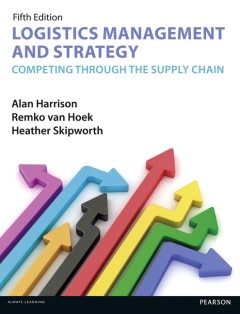
Logistics management and strategy Competing through the supply chain
Logistics has been emerging from Peter Drucker’s shadowy description as ‘the economy’s dark continent’ for some years.1 From its largely military origins, logistics has accelerated into becoming one of the key business issues of the day, presenting formidable challenges for managers and occupying some of the best minds. Its relatively slow route to this exalted position can be attribute…
- Edisi
- 3rd edition
- ISBN/ISSN
- 978-0-273-71276-3
- Deskripsi Fisik
- xxv, 311p
- Judul Seri
- -
- No. Panggil
- TXT LO HAR l

Port capacity evaluation formula for general cargo
The objective of this research is to study the evaluation method of berth capacity for general cargo in port. Specially, this study discussed the evaluation formula for general cargo berth capacity. It described the traditional evaluation method and new evaluation method with a sample case using real data of the general cargo berth. The results of the study revealed some problems for tradi…
- Edisi
- Volume 30
- ISBN/ISSN
- -
- Deskripsi Fisik
- 18 p.
- Judul Seri
- -
- No. Panggil
- ATC PO PAR p
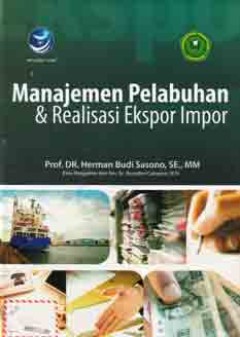
Manajemen pelabuhan & realisasi ekspor impor
- Edisi
- -
- ISBN/ISSN
- 978-979-29-3077
- Deskripsi Fisik
- xi, 891 p
- Judul Seri
- -
- No. Panggil
- TXT PO SAS m
- Edisi
- -
- ISBN/ISSN
- 978-979-29-3077
- Deskripsi Fisik
- xi, 891 p
- Judul Seri
- -
- No. Panggil
- TXT PO SAS m

A polynomial-time heuristic for the quay crane double-cycling problem with in…
One of great challenges in seaport management is how to handle containers under reshuffling, called reshuffles. Repositioning reshuffles in a bay (internal reshuffling) can improve the efficiency of quay cranes and help ports to reduce ship turn-around time. This paper studies the quay crane double-cycling problem with internal-reshuffling operations, and presents a fast solution algorith…
- Edisi
- -
- ISBN/ISSN
- -
- Deskripsi Fisik
- 23 p.
- Judul Seri
- -
- No. Panggil
- ATC PO LIU a
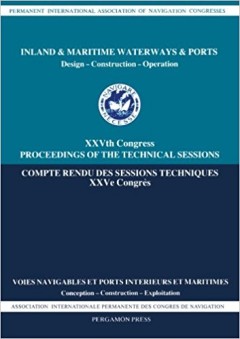
Inland & maritime waterways & ports
- Edisi
- -
- ISBN/ISSN
- 0-08-026750-5
- Deskripsi Fisik
- 249 p.
- Judul Seri
- -
- No. Panggil
- TXT PO WIL i
- Edisi
- -
- ISBN/ISSN
- 0-08-026750-5
- Deskripsi Fisik
- 249 p.
- Judul Seri
- -
- No. Panggil
- TXT PO WIL i

Using a “Virtual Joint Venture” to Facilitate the Adoption of Intermodal …
Purpose – This paper aims to examine a strategic alliance between a large shipper and a freight forwarder to provide an intermodal service to and from the port of Gothenburg. The supply chain literature discusses various models of supply chain collaboration and integration. When applied to logistics, each has been shown to exhibit different levels of success depending on particular factors.…
- Edisi
- Vol. 20 Iss 5 pp
- ISBN/ISSN
- 1359-8546
- Deskripsi Fisik
- 16 p
- Judul Seri
- Supply Chain Management: An International Journal
- No. Panggil
- ATC LO MON u
Port operations and container terminal management
- Edisi
- -
- ISBN/ISSN
- 978-3-639-36568-9
- Deskripsi Fisik
- vi, 100 p
- Judul Seri
- -
- No. Panggil
- TXT PO GUL p
- Edisi
- -
- ISBN/ISSN
- 978-3-639-36568-9
- Deskripsi Fisik
- vi, 100 p
- Judul Seri
- -
- No. Panggil
- TXT PO GUL p
Shipboard cargo handling safety guide
This new publication of “Shipboard Cargo Handling Safety Guide” isbased on the safety guide of the same title issued by this department in 1982, and revised with updated safety and health basic knowledge by the Transport & Physical Distribution Industry Safety & Health Committee of the Occupational Safety & Health Council to finalize the edition. The Occupational Safety & Health Council pub…
- Edisi
- -
- ISBN/ISSN
- -
- Deskripsi Fisik
- 55 pages
- Judul Seri
- -
- No. Panggil
- TXT LO MAR s
The Impact of Mega-Ships
This report forms part of an OECD/ITF project on the Impact of Mega-Ships, directed by Olaf Merk. This report is written by Olaf Merk, Bénédicte Busquet and Raimonds Aronietis. Written contributions were provided by Alain Lumbroso (OECD/ITF); as well as Burkhard Lemper, Sönke Maatsch and Michael Tasto from ISL. Visual contributions were provided by Philippe Rekacewicz, Philippe Rivière and…
- Edisi
- -
- ISBN/ISSN
- -
- Deskripsi Fisik
- 108 p
- Judul Seri
- -
- No. Panggil
- TXT PO INT t

Vehicle Scheduling in Port Automation
Many people helped us in various ways in the preparation of this book. First of all, we are grateful to Dr. John Ford, from the School of Computer Science and Electronic Engineering at the University of Essex, for his suggestion that we develop the dynamic network simplex algorithm and his comments on this research. We thank Professor Hu, the head of the Robotics Research Group at the Universi…
- Edisi
- Second Ed.
- ISBN/ISSN
- 978-1-4987-3254-3
- Deskripsi Fisik
- xxv, 231 p
- Judul Seri
- -
- No. Panggil
- TXT PO RAS v
Port Operations, Planning and Logistics
Port Operations, Planning and Logistics offers detailed analysis of world port systems by applying both theoretical and practical (managerial) approaches to port operations, management and policy. The author draws from a rare combination of extensive cross-management professional experience and established multidisciplinary academic expertise to provide a structured publication that cuts across…
- Edisi
- -
- ISBN/ISSN
- 978-1-843-11805-3
- Deskripsi Fisik
- xv, 345 p
- Judul Seri
- -
- No. Panggil
- TXT PO BIC P
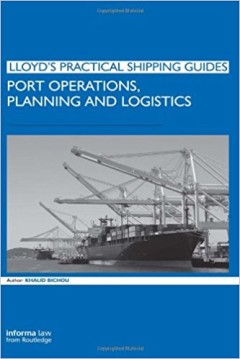
Port operations, planning and logistic
- Edisi
- -
- ISBN/ISSN
- 978-1-843-11805-
- Deskripsi Fisik
- xv, 373 p
- Judul Seri
- -
- No. Panggil
- TXT PO BIC p
- Edisi
- -
- ISBN/ISSN
- 978-1-843-11805-
- Deskripsi Fisik
- xv, 373 p
- Judul Seri
- -
- No. Panggil
- TXT PO BIC p

Cusum modelling of the dynamics of process performance improvement programmes
To evaluate the Cusum model as a means of rapid trend detection and dynamic response classifier in a low signal/noise environment.
- Edisi
- Vol. 55 No. 2, 2006 pp. 99-117
- ISBN/ISSN
- -
- Deskripsi Fisik
- 20 p.
- Judul Seri
- International Journal of Productivity and Performance Management
- No. Panggil
- ATC LO OWE c

Developing a logistics strategy through participative business modelling
Introduces the participative business modelling method (PBM), a management consulting method based on a synergetic mix of (system dynamics) modelling, group knowledge elicitation techniques and a process consultation attitude. PBM is a method well‐suited to support managers in their strategic decision‐making processes, in particular in the field of operations management, because it provides…
- Edisi
- Vol. 15 No. 11, 1995
- ISBN/ISSN
- -
- Deskripsi Fisik
- 15 p.
- Judul Seri
- International Journal of Operations & Production Management
- No. Panggil
- ATC LO AKK d

Collaborative forecasting and planning in supply chains: The impact on perfor…
The purpose of this paper is to empirically examine the impact of internal and external collaborative forecasting and planning on logistics and production performance.
- Edisi
- Vol. 39 No. 2, 2009 pp. 84-105
- ISBN/ISSN
- -
- Deskripsi Fisik
- 25 p.
- Judul Seri
- International Journal of Physical Distribution & Logistics Management
- No. Panggil
- ATC LO NAK c

Managing airborne relief during international disasters
The purpose of this paper is to highlight the need for an entity to manage airborne relief when a nation’s civil aviation authorities are overwhelmed or incapacitated due to a major rapid-onset disaster.
- Edisi
- Vol. 5 No. 1, 2015
- ISBN/ISSN
- -
- Deskripsi Fisik
- 26 p.
- Judul Seri
- Journal of Humanitarian Logistics and Supply Chain Management
- No. Panggil
- ATC LO EDW m

Benchmarking supply chain operations
Measuring logistics performance has traditionally focused on operational areas. For example in a warehouse pallets per hour is the typical measure for receiving and despatch; cartons per hour for picking, replenishment, put away and overall throughput; and service levels are calculated by dividing cartons requested by cartons shipped. A more sophisticated operation will generate additional meas…
- Edisi
- Vol. 29 Iss 4 pp. 259 - 266
- ISBN/ISSN
- -
- Deskripsi Fisik
- 11 p.
- Judul Seri
- International Journal of Physical Distribution & Logistics Management
- No. Panggil
- ATC LO GIL b

A container yard storage strategy for improving land utilization and operatio…
This paper studies the storage yard management problem in a busy transshipment hub, where intense loading and unloading activities have to be considered at the same time. The need to handle huge volumes of container traffic and the scarcity of land in the container port area pose serious challeng for the port operator to provide efficient services. A consignment strategy with a static yard temp…
- Edisi
- -
- ISBN/ISSN
- -
- Deskripsi Fisik
- 10 p.
- Judul Seri
- European Journal of Operational Research
- No. Panggil
- ATC LO HAN a

An optimization model for storage yard management in transshipment hubs
This paper studies a yard storage allocation problem in a transshipment hub where there is a great number of loading and unloading activities. The primary challenge is to efficiently shift containers between the vessels and the storage area so that reshuffling and traffic congestion is minimized. In particular, to reduce reshuffling, a consignment strategy is used. This strategy groups unloaded…
- Edisi
- -
- ISBN/ISSN
- -
- Deskripsi Fisik
- 23 p.
- Judul Seri
- REGULAR ARTICLE
- No. Panggil
- ATC LO HAN a

Postponement and the reconfiguration challenge for food supply chains
Both postponement and outsourcing have been identified as important characteristics of modern and competitive supply chains. The implementation of postponement may require extensive (spatial) reconfiguration of the supply chain. Presents findings from interviews with managers of food, electronics, automotive and clothing manufacturers in The Netherlands, Belgium and Germany. Findings reveal tha…
- Edisi
- Volume 4 · Number 1 · 1999 · 18–34
- ISBN/ISSN
- -
- Deskripsi Fisik
- 17 p.
- Judul Seri
- -
- No. Panggil
- ATC LO VAN p
 Karya Umum
Karya Umum  Filsafat
Filsafat  Agama
Agama  Ilmu-ilmu Sosial
Ilmu-ilmu Sosial  Bahasa
Bahasa  Ilmu-ilmu Murni
Ilmu-ilmu Murni  Ilmu-ilmu Terapan
Ilmu-ilmu Terapan  Kesenian, Hiburan, dan Olahraga
Kesenian, Hiburan, dan Olahraga  Kesusastraan
Kesusastraan  Geografi dan Sejarah
Geografi dan Sejarah